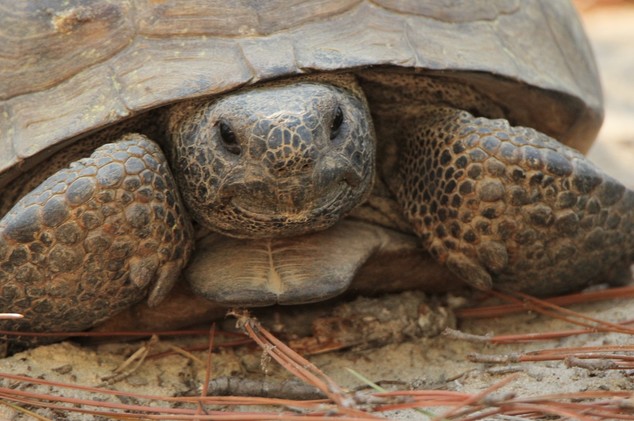
In Georgia, the gopher tortoise will not be added to the federal Endangered Species Act list in large part because of the power of partnerships.
The U.S. Fish and Wildlife Service said this week the eastern population of gopher tortoises – those east of Alabama’s Tombigbee and Mobile rivers – is “robust” and the species in that segment is no longer a candidate for federal listing. The data-based findings, which do not change state regulations protecting gopher tortoises in Georgia or other states, will be discussed in a virtual public meeting Dec. 13.
Credit for the good news on gophers is shared by Georgia’s Gopher Tortoise Conservation Initiative. The collaboration that has grown to nearly 30 agencies, conservation organizations, companies, foundations and landowners has been working since 2015 to keep the state reptile off the federal list. The larger aim: preserving Georgia’s economic viability and other native animals and plants in need of conservation.
Commissioner Mark Williams of the Georgia Department of Natural Resources said initiative members realized they could work together to hopefully avoid listing the tortoise or do nothing and risk facing increased federal regulation that could affect key parts of the state’s economy if the species was listed.
“While they knew the listing decision would not rest solely on efforts in Georgia, partners brought their unique strengths to the table, set strategic conservation goals and made great strides toward those goals,” Williams said. “In the end, I think that effort helped significantly. This collaborative approach shows tremendous promise as a model for successful wildlife conservation going forward.”
When work began, Georgia had 36 protected populations. The total is now 62, just three shy of the goal. Other additions are possible soon.
The progress has been achieved through range-wide surveys to identify tortoise-rich tracts, extensive coordination with landowners and nonprofits, strategic planning, and deep support, varying from foundations and federal grants to the U.S. Defense Department and the Georgia Outdoor Stewardship Program. Results include highlight acquisitions such as Ceylon and Alapaha River wildlife management areas, plus conservation easements on private lands. All help make sure gophers are here to stay.
|